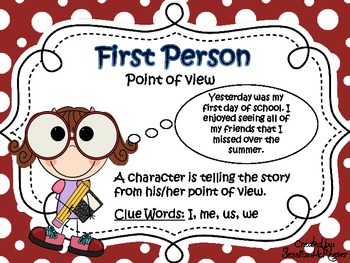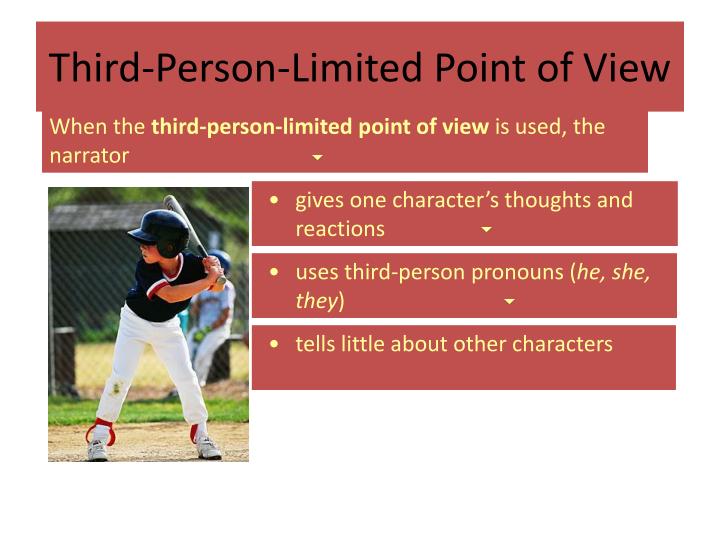

He was tempted to fly or rent a car, but he was short of money and he liked buses better and he figured nothing much was going to happen on the weekend anyway. In this case, information is still only discovered by the narrator as the character discovers it, but more than one character can make those discoveries. Third-person narration can also show the limited perspective of multiple characters. The reader experiences the vampire as the boy does.

The wraparound scenes where the boy is interviewing Louis share the boy’s reactions, starting with disbelief and then disgust, and ending with fascination and obsession. The main part of the story is Louis describing his life, but that is all expressed through dialogue in a first-person narration, and in that respect what Louis says can be questioned and dissected. Interview with the Vampire only allows us into the thoughts of the boy interviewing Louis, the titular vampire. And then he sighed with relief when the vampire moved towards the table and reached for the overhead cord.

He started to say something again but he said nothing. The boy could make out nothing of his face now, and something about the still figure there distracted him. The vampire was watching him with his back to the window. This allows for more intimacy and helps break down the distance between the narrator and the characters. On some occasions, writers may choose to include elements of first-person point-of-view by mentioning character thoughts and feelings without using ‘he thought’ or ‘she felt’ in the text. That means the narrator only knows what the protagonist knows, and so the reader also is limited in their understanding. Third-person limited only offers insight into the thoughts of one character, instead of all. For any other perspective, this would be impossible in multiple characters in this way, with the possible exception of a combined first and second-person point-of-view. In the space of three paragraphs Herbert changes internal perspective by showing direct thoughts from Paul and then the Reverend Mother, with a transitionary paragraph between showing the Reverend Mother’s actions and indirect thoughts as she studies Paul’s face. Now, there was a man who appreciated the power of bravura-even in death, the Reverend Mother thought. The old woman studied Paul in one gestalten: face oval like Jessica’s, but strong bones…hair: the Duke’s black-black but with the browline of the maternal grandfather who cannot be named, and that thin, disdainful nose shape of directly staring green eyes: like the old Duke, the paternal grandfather who is dead.

The narrator may also know what is coming and have insight into the plot, though this is not always the case. Third-person omniscient is writing from the viewpoint of a God-like figure who can see all and is aware of every character’s thoughts. Both use variations on ‘he’, ‘she’, ‘it’, and ‘they’ to include characters in the story, and, depending on the awareness and objectivity of the narrator, to impart opinion and decisions. Typically, third-person falls into two categories: third-person omniscient, where the narrator knows everything about the world and all characters and third-person limited, where the narrator only knows details about key characters and learns as events unfold throughout the story. This allows the writer to explore different characters and for multiple perspectives to be inferred, though does not have to mean that is the case. Third-person perspective is writing from the point-of-view of an outsider telling the story. The Advantages and Disadvantages of Third-Person Perspective By Seb Reilly


 0 kommentar(er)
0 kommentar(er)
